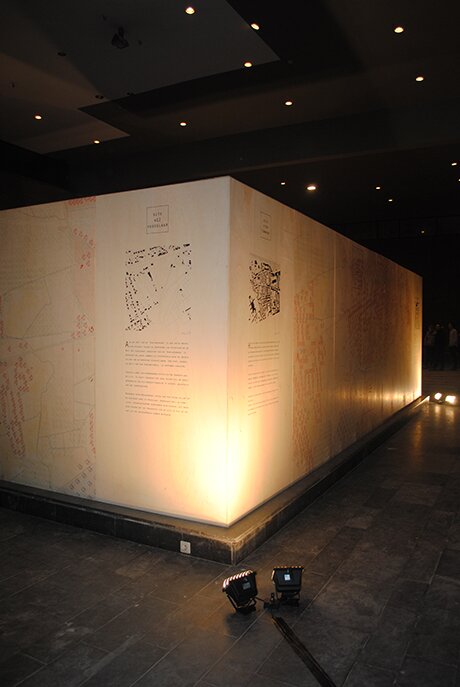Building closer, living larger

The city council of Turnhout (together with neighbourhood villages Oud Turnhout, Vosselaar and Beerse) is setting up a 'lab' to search for new forms of living, close to the village or city centre WOONLABO : OVER WONEN IN DE TOEKOMST. A research program on new collective forms of living in an attempt to densify the urban centre. The research program wants to examine new models of densification for different types of neighbourhoods of single-family plots.
The department of design sciences of the University of Antwerp became a partner in this research program. More specifically, this project was embedded within a currently running phd-project (Glenn Lyppens) on collective use of space within urban settings.
For their master project, students performed an in-depth analysis of the existing city-structure of the city-region Turnhout. In little groups they focused on developing a Master plan for particular areas pointed out by the local authorities.
Research context.
The city-region of Turnhout is a typical result of the policy to stimulate private homeownership. The landscape surrounding the urban centre consists out of a suburban sprawl and low density. Following questions came up :
- How can we density the urban centre?
- Which densification model can be applied for different types of neighbourhoods of single-family plots?
The students developed new residential models for a variation of typological city areas. Some of which can be an exemplary strategy for similar locations throughout the Flemish sprawl.
Impact.
The students' research output became formalized within a public exhibition. In St. Jozefkerk Vosselaar from 21 sep 2015 to 21 nov 2015.
The exhibition room is used as a workshop room where inhabitants and neighbours of a specific location will be invited to discuss the models in a workshop organised by the city.
Students and researchers can attend the workshop and gather information for the next design step. This interaction between inhabitants and researchers has an impact on a social and cultural scale and on the knowledge of the researchers.
The research program as already reached a great number of inhabitants and is continued until today.